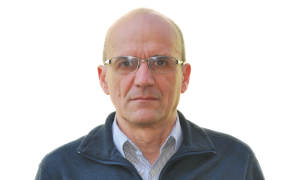The presented good practise underlines a successfully implementation of the Dr.Bob (Demand Response in Blocks of buildings ) Horizon 2020 project.
At the Romanian pilot site, a building and energy management system configuration was adopted in order to test different scenarios at 4 buildings of TUCN (Student’s dormitories, Swimming Pool, Faculty of Electrical Engineering and Faculty of Building Services). Also, partial retrofitting of the lighting system with LED technology was implemented in some of the classrooms. At the Swimming pool the main implementation was based on the pumps, introducing variable speed drive (VSD).
In this way, the project demonstrates the extendibility of the concept and good practices to local and also national public authority’s level. The knowledge transfer was tailored at different stakeholders.
The main benefits of the implementation of proposed solutions and demand response strategies are the following:
• Improved energy management actions;
• Engaging the energy managers of the universities, as 3 people from the technical staff benefited from Dr. BoB project and post-graduate course;
• Better understanding of the TUCN buildings and its costs with energy and utilities;
• A living lab demo site where students are directly implicated, with real time access to the BoB energy use.
The main stakeholders of the implemented solutions were, mainly, the students from the university and permanent staff, the solution being active in the Student’s dormitories, Swimming Pool, Faculty of Electrical Engineering and Faculty of Building Services. Almost 9800 people were directly involved in this.
Resources needed
Blocks of building, Server, Siemens Simatic Box P, Siemens PAC3100 Power Monitors for energy monitoring. Cost was approximately €47,000 as monetary resources.
Evidence of success
The electricity savings achieved were 779.6 MWh, meaning a reduction of 19.3% from total consumption. Respectively the total primary energy savings were 1.257 GWh.
Four of the TUCN buildings were used in order to test different scenarios and demand respond events.
Difficulties encountered
It was challenging to engage with 900 students for the DR events. The geographical distance with the student dormitories made it more difficult for the demo-site managers to motivate and engage them. The ability to participate among academic staff was affected by the timing of some DR event.
Potential for learning or transfer
The presented good practices from Dr.BoB project reflect the success in knowledge transfer throw research and development, by implementing different innovative technologies, innovative approaches in order to educate, train and show a good example in the local community, but also at national, and European level.
Horizon 2020 research and innovation programme was created in order to shape the future, to support a more sustainable environment and to increase job possibilities. These are just a few objectives which were also achieved by the project.
Innovation should be based on research, passion and people and should address to people for their well-being.
Well-being is also a key factor of the presented project, because energy efficiency, renewable energy sources, less CO2 emissions contributes to a better life, better comfort and happiness among building occupants, employees and any other stakeholder, which can take part of the success.
Please login to see the expert opinion of this good practice.
Tags: Buildings, Energy efficiency, Smart energy systems








